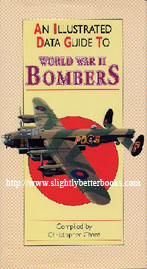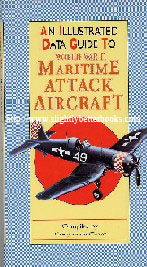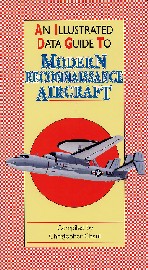Tiger Books Illustrated Data Guides: WWII, World War 2
-Compact illustrated directories with full details and specifications: over 20,000 words of expert text and data |
| In Pictures: |
****Hyperlinked titles will take you to our copy on sale or prebuilt searches of copies on sale****
Useful Links:
Books on Ebay-see our specially prebuilt search below
Books on Amazon-see our specially prebuilt banner below
Titles to Look Out For:
1997. Battle Tanks of World War II
1997. Battleships of World War II
1997. Bombers of World War II by Christopher Chant
1997. Fighters of World War II by Christopher Chant
1997. Maritime Attack Aircraft of World War II by Christopher Chant
1997. Modern Aircraft Carriers
1997. Modern Artillery
1997. Modern Fast Attack Craft
1997. Modern Reconnaissance Aircraft by Christopher Chant
1997. Submarines of World War II |
On Amazon: |

1997, Tiger Books, hbk
In stock, click to buy for £1.45, not including p&p
Alternative online retailers to try:
Click here for our prebuilt search for any edition of this book on Abebooks
Click here for our prebuilt search for any edition of this book on Alibris
Click here for our prebuilt search for any edition of this title on Ebay |
About this book/synopsis: This book is a compact illustrated directory of WWII fighter aircraft with full details and specifications. Includes over 20,000 words of expert text and data.
The bomber of WW1 had shown its worth as a tactical weapon, but the beginnings of strategic bombing were also to be found in that conflict. During the later 1920s and the 1930s, however, enormous capabilities were credited to the newer generations of bomber, which were thought to be capable winning wars on their own. The Germans, rebuilding their airforce in the mid-1930s, believed that the bomber should be a tactical weapon, to serve the interests of the army, in offensive warfare as 'flying artillery'. The Second World War showed both concepts to be basically sounds, but of lesser capability than had been expected. Therefore the Allies added tactical bombers to their strategic capability, whilst the Germans (and to a lesser extent the Japanese) made belated and ultimately fruitless attempts to develop a strategic capability.
By the end of WWII, the dropping of the two atom bombs on Japan by Boeing B-29 Superfortress bombers finally ushered in the true era of strategic bombing; the Allies had a devastating range of twin- and four-engined bombers
Includes data and development history on the following bombers:
1. Avro Type 683 Lancaster
2. Boeing Model 299 (B-17 Flying Fortress)
3. Boeing Model 345 (B-29 Superfortress)
4. Consolidated Model 32 (B-24 Liberator)
5. Handley Page H.P.57 Halifax
6. Heinkel HE 111H
For each of the above planes, a colour image is shown and the following data points are given: Manufacturer; Country of Origin; Specification (i.e. Lancaster B. MkIII); Entered Service (date); Left Service (date); Armament (fixed); Armament (disposable); Operational Equipment (e.g. communication, navigation); Powerplant (e.g. Four Packard (Rolls Royce) Merlin 28 or 38 Vee piston engines); Fuel Capacity; Dimensions
Weights; Performance; Variants (e.g. Lancaster Mk1); Lancster Mk II; Lancaster B. Mk III; Lancaster B. Mk VI; Lancaster B. Mk VII; Lancaster B. Mk X |
|

1997, Tiger Books Int'l, hbk
In stock, click image to buy for £1.65, not including p&p
Alternative online retailers to try:
Click here for our prebuilt search for any edition of this book on Abebooks
Click here for our prebuilt search for any edition of this book on Alibris
Click here for our prebuilt search for any edition of this title on Ebay |
About this book/synopsis: This book is a compact illustrated directory of WWII fighter aircraft with full details and specifications. Includes over 20,000 words of expert text and data.
At the start of World War II, the fighter was essentially a short-range warplane optimised for the defence of national airspace: aircraft typical of this concept were the Hawker Hurricane, Messerschmitt Bf 109 and Supermarine Spitfire. As the war progressed, the fighter was transformed into a longer-range warplane offering multi-role capability: drop tanks provided the additional range, and an increasing weight and diversity of external loads offered the additional capability in the escort and ground-attack roles. Most of the early aircraft could be adapted to the changing requirements, but others such as the classic American fighters, most notably the Grumman F6F Hellcat, North American P-51 Mustang, Republic P-47, Thunderbolt and Vought F4U were designed with these features. The introduction of considerably more powerful engines boosted performance to a significant degree, and then the advent of the turbojet allowed the creation of a new breed of fighter epitomised by the Gloucester Meteor and, most of all, the Messerschmitt Me 262. The Italians, Japanese and Soviets failed to match the most radical of these developments, but all produced fighters that were admirably suited to the tactical demands made of them.
Includes data and development history on the following fighters:
1. Focke-Wulf Fw 190
2.
Hawker Hurricane
3.
Messerschmitt Bf 109
4.
Nakajima Ki-43 Hayabusa 'Oscar'
5.
Republic P-47 Thunderbolt
6.
Yakonlev Yak-9
For each of the above planes, a colour image is shown and the following data points are given: Manufacturer, Country of Origin, Specification, Type, Accommodation, Entered Service (date), Left Service (date), Operational Equipment (e.g. standard communication and navigation equipment, plus a Revi 16/B reflector gunsight), Armament, Powerplant, Fuel Capacity, Dimensions, Weights, Performance, Variants: e.g. (for the Focke-Wulf) Fw 190A-1; Fw 190A-2; Fw 190A-3; Fw 190A-4; Fw 190A-5; Fw 190A-6; Fw 190A-7; Fw 190A-8; Fw 190A-9; Fw 190D-12 |
|

1997, Tiger Books Int'l, hbk
In stock, click to buy for £1.45, not including p&p
Alternative online retailers to try:
Click here for our prebuilt search for any edition of this book on Abebooks
Click here for our prebuilt search for any edition of this book on Alibris
Click here for our prebuilt search for any edition of this title on Ebay |
About this book/synopsis: This book is a compact illustrated directory of WWII Maritime Attack aircraft with full details and specifications. Includes over 20,000 words of expert text and data.
All the major combatants in the Second World War developed and used maritime attack aircraft. The Germans saw such aircraft as a complement to their submarines for the devastation of Allied convoys, and the Japanese and Italians as their best method of attacking and destroying the major warships on which the British and Americans respectively relied for sustained operations in the Mediterranean and the Pacific. On the Allied side, it was the British and Americans who made the most extensive use of maritime attack aircraft from both shore bases and aircraft carriers. Aircraft carriers hoisted a range of single-engined warplanes for attacks on naval and land targets; the original combination of single-role dive bombers and torpedo bombers gradually being replaced by more advanced dual-role aircraft. Ultimately, it was the aircraft carriers the emerged from WWII as the new capital ship in succession to the battleship, and it was its large complement of maritime attack aircraft that gave the type its considerable power in the medium-range destruction of enemy.
Includes data and development history on the following maritime attack aircraft:
1.
Aichi D3A 'Val'|
2.
Blackburn B-24 Skua
3.
Bristol Type 152 Beaufort
4.
Bristol Type 156 Beaufighter Mks VI and X
5.
Douglas SBD Dauntless
6.
Fairey Swordfish; Grumman G-40 (TFB Avenger).
For each of the above planes, a colour image is shown and the following data points are given: Manufacturer, Country of Origin, Specification (e.g. D3A2 Model 22), Type, Accommodation, Entered Service date, Left Service date, Armament (fixed), Armament (disposable), Operational Equipment, Powerplant, Fuel Capacity, Dimensions, Weights, Performance, Variants: e.g. D3A1, D3A2 |
|

1997, Tiger Books Int'l, hbk
In stock, click image to buy for £1.45, not including p&p
Alternative online retailers to try:
Click here for our prebuilt search for any edition of this book on Abebooks
Click here for our prebuilt search for any edition of this book on Alibris
Click here for our prebuilt search for any edition of this title on Ebay |
About this book/synopsis: This book is a compact illustrated directory of WWII Maritime Attack aircraft with full details and specifications. Includes over 20,000 words of expert text and data.
Having the latest data to hand on the enemy's dispositions and strengths has always been a key to the deduction of their intentions and the creation of counter-plans, and from the time of World War I reconnaissance to acquire such knowledge has become an increasingly vital task, figuring prominently in military thinking. Since the end of World War II, the use of aircraft for reconnaissance purposes has proliferated not so much in numerical terms of the aircraft involved but in the versatility of the reconnaissance that can now be provided through electronic and infra-red as well as optical means. Garnered by advanced sensors and processed by high-speed computers on board the reconnaissance aeroplane, the reconnaissance data can now be relayed in real time to the user force by means of a data link system. Moreover, the availability of advanced sensors and processors allows such aircraft to undertake other roles that include the command of friendly forces and disruption of the enemy's efforts.
Includes data and development history on the following reconnaissance aircraft:
1. Boeing E-3 Sentry
2.
Ilyushin A-50 'Mainstay'
3.
Lockheed Martin EC-130 Hercules
4.
Lockheed Martin SR-71
5.
Lockheed Martin U-2 and TR-1
6.
McDonnell Douglas RF-4 Phantom II
7.
Northrop Grumman (General Dynamics) EF-III Raven
8.
Northrop Grumman E-2 Hawkeye
9.
Northrop Grumman EA-6 Prowler
10.
Dassault Mirage FIR.
For each of the above planes, a colour image is shown and the following data points are given: manufacturer, country of origin, specification, Type (e.g. AWACS), Accommodation, Date of Entry into Service, Date of Quitting Service, Operational Equipment (e.g. IBM 4 Pi CC-I high speed computer), Powerplant, Fuel Capacity, Dimensions, Weights, Performance, Variants (e.g. for the Boeing E-3 Sentry it looks at the EC-137C, E3C Sentry, E-3D Sentry, E-3F Sentry, E-6A Mercury, E-8A, E-8C, IAI Model 707 Phalcon) |
|
|
|
[top] |
| |
Books on Amazon:
[please note that lack of pricing for a book does not mean book is out of stock, but that there are only secondhand copies available]
|
[top] |







